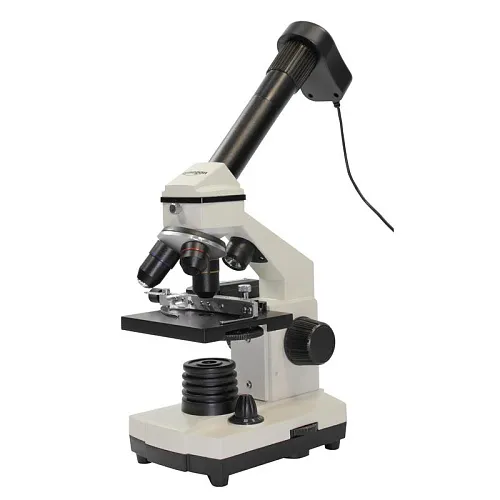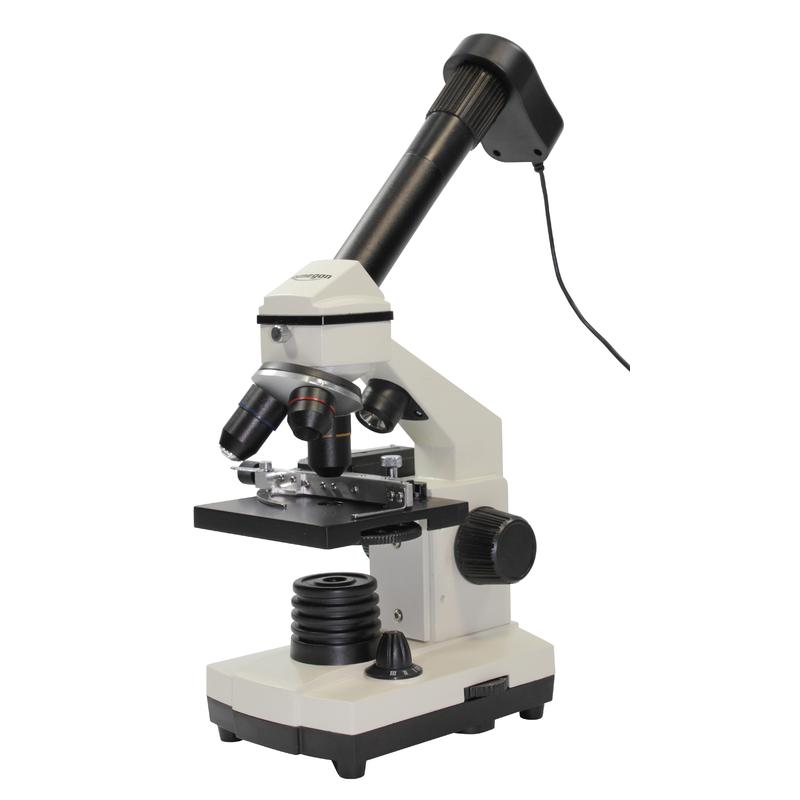Omegon MonoView, MicroStar 1280x LED Microscope
Achromatic. Magnification: 1280x. Experiment kit included
Monocular
The microscope head is a core element of the microscope that you look through to see a magnified sample
20 — 1280
How much the size of a sample increases when you observe it through a microscope
School/educational
Application and use of the microscope
| Product ID | 73208 |
| Brand | Omegon |
| Warranty | 2 years |
| EAN | 2400000037835 |
| Package size (LxWxH) | 33x22x20 cm |
| Shipping Weight | 3.1 kg |
Description
Specifications
| Product ID | 73208 |
| Brand | Omegon |
| Warranty | 2 years |
| EAN | 2400000037835 |
| Package size (LxWxH) | 33x22x20 cm |
| Shipping Weight | 3.1 kg |
| Type | digital |
| Head | monocular |
| Nozzle | 360 ° rotatable |
| Head inclination angle | 45 ° |
| Magnification, x | 20 — 1280 |
| Eyepieces | 5x, 16x |
| Working distance, mm | 30 |
| Focus | coarse |
| Illumination | LED |
| Brightness adjustment | ✓ |
| User level | beginners, experienced users |
| Optical scheme | achromat |
| Application | school/educational |
| Illumination location | upper |
| Research method | bright field |
| Experiment kit included | ✓ |
| Digital camera included | ✓ |
| Pouch/case/bag in set | case |
Reviews
Frequently Asked Questions – Microscopes (20.04.2020)
We have gathered answers to the most frequently asked questions to help you sort things out
We have gathered answers to the most frequently asked questions to help you sort things out
Eye under a microscope: insects’ photo (20.04.2020)
Find out why studying eyes under a microscope is entertaining; how insects’ and arachnids’ eyes differ and what the best way is to observe such an interesting specimen
Find out why studying eyes under a microscope is entertaining; how insects’ and arachnids’ eyes differ and what the best way is to observe such an interesting specimen
What does hair look like under a microscope? (17.05.2020)
Read this review to learn how to observe human hair, what different hair looks like under a microscope and what magnification is required for observations
Read this review to learn how to observe human hair, what different hair looks like under a microscope and what magnification is required for observations
How does the aperture of a microscope objective lens work? (17.05.2020)
Learn what a numerical aperture is and how to choose a suitable objective lens for your microscope here
Learn what a numerical aperture is and how to choose a suitable objective lens for your microscope here
A spider under a microscope: photos and peculiarities of studying the slide (18.05.2020)
Learn what a spider looks like under microscope, when the best time is to take photos of it, how to study it properly at magnification and more interesting facts about observing insects and arachnids
Learn what a spider looks like under microscope, when the best time is to take photos of it, how to study it properly at magnification and more interesting facts about observing insects and arachnids
What does a microscope consist of? (18.05.2020)
This review for beginner explorers of the micro world introduces you to the optical, illuminating and mechanical parts of a microscope and their functions
This review for beginner explorers of the micro world introduces you to the optical, illuminating and mechanical parts of a microscope and their functions
Paramecium caudatum - your first friend from the microworld (21.11.2016)
Short article about Paramecium caudatum - a microorganism that is interesting to observe through any microscope
Questions and Answers
Submit your question

 BG
BG  BY
BY  CY
CY  CZ
CZ  DE
DE  EE
EE  ES
ES  GR
GR  HU
HU  IS
IS  IT
IT  LT
LT  LV
LV  MY
MY  PL
PL  PT
PT  RO
RO  SK
SK  TR
TR  UA
UA  USA
USA 













